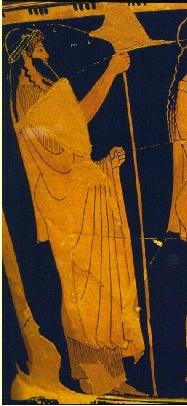NARMER (GREEK: MENES)
Before Narmer, the villages of Egypt were not together as one nation, but separate worlds. Narmer brought a common culture and religion to the land on the Nile, that would last 3,000 years. Succeeding all local rulers, he built an elaborate capital at Memphis and an earthen tomb for himself. From Narmer sprang the 1st Dynasty, and the Old Kingdom of Egypt was born. Right: Narmer smacks a defiant peasant on the head, showing off his power as king.
3130-3080
Founding Pharaoh of Egypt
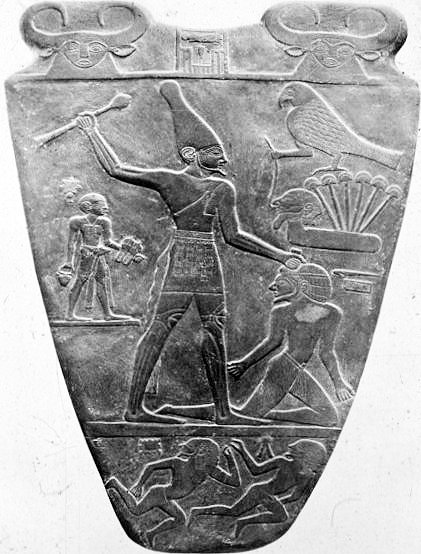
GILGAMESH
Gilgamesh was priest- king of the Sumerian city of Uruk (Bible: Erech), who built a 6 mi. wall around it for defense. Sargon was later to destroy this wall. But it was in death that he became immortalized, as the main character in the first piece of great literature, the Epic of Gilgamesh. Great literature is so because it helps answer some of the questions that are the permenant concerns of mankind, such as, "How should I live?" or "What is justice?" Here, Gilgamesh discovers the dignity of mortality. The ruins of Uruk were found in 2003, and are being excavated presently amid the chaos in Iraq. Right: Bust of Gilgamesh.
2810-2740
Priest-King of Uruk, Sumeria
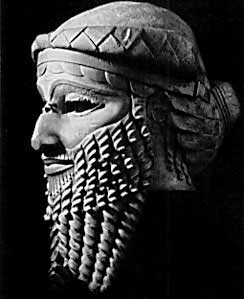
DJOSER (GREEK: ZOSER)
Old Kingdom Pharaoh of the 3rd Dynasty who expanded pharaonic power, he began the custom of building pyramidal shaped tombs of great size. The Step Pyramid of Saqqara was the result of this labor, the first large stone structure ever built by human hands (200 ft. high), which makes it also therefore the oldest large structure on Earth. Right: Djoser Statue.
2685-2640
Pharaoh of Egypt
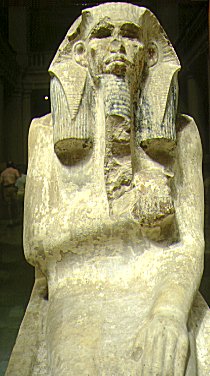
IMHOTEP
Pioneering ancient architect to Pharaoh Djoser, who drew up the plans and executed the design for the Step Pyramid. The pharaoh being well pleased with his work, Imhotep was honored in statuary.
2680-2630
Egyptian Architect
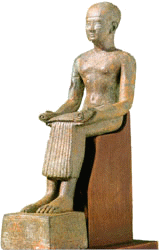
SNEFERU
Egypt under the 4th Dynasty reached a peak of ancient glory and stability. Sneferu, just and fair, ushered this era in and was put to rest in the Bent Pyramid of Dashur, which is the first true pyramid, smooth, not stepped. Cedar was imported for this from the Levant, and other products from Nubia, indicating a widening trade area.
2640-2580
Pharaoh of Egypt
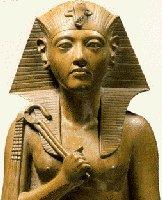
KHUFU (GREEK: CHEOPS)
Under Khufu's golden and divine command, Egypt had a population of 2 million. He built the 481 ft. high Great Pyramid of Giza, the first wonder of the world. The Nile was busy with merchant trade under him, with quarried material, food, people and goods brought from villages to the capital and back. The Great Pyramid is the only one of the 7 Wonders still standing.
2610-2560
Pharaoh of Egypt
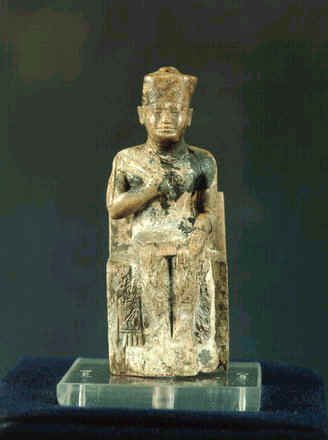
KHAFRA (GREEK: CEPHEREN)
Continued the successful rule of the 4th Dynasty over the land, as Egyptians believed in a balance of life called ma'at, which the pharaoh helped maintain. His name means 'appearing like Ra (the sun god)', and it is his face is found on the Great Sphinx, which he built along with the other large pyramid of Giza, next to that of his father.
2580-2520
Pharaoh of Egypt
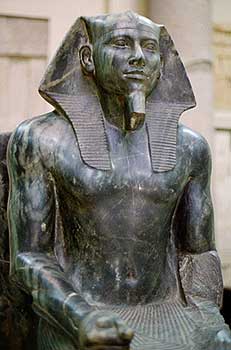
LUGALZAGGISI
The Sumerians started calling their priest-kings 'Lugal' (big man), especially if they were successful in battle. King lists were dawn up in many cities, indicating how they kept time. Lugal-Zaggisi was a powerful king who went out from his minor city (Umma) and fought and defeated the lugals of other, larger, city states: like Lagash and Uruk. This victory would not last long... for a new conquerer would emerge from outside of Sumer, in the center of Mesopotamia.
2400-2350
Priest-King of Sumeria
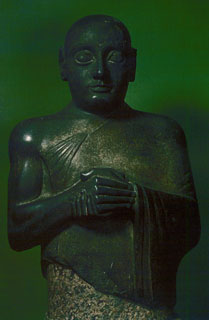
SARGON OF AKKAD
The first great empire-builder of history, Sargon's city was called Akkad (Gr. Agade). Using bow and arrows and spears, he led his forces south to defeat the civilized cities (including Lugal-Zaggisi's) one by one, unifying them under his control and beginning an Age of Empires (an empire is a heterogeneous territories brought under the rule of an emperor). He is the first to be called "The Great," and he really was a smart guy, good at propoganda: his daughter write poetry on the theme of unity between Sumerians and Akkadians, and he paraded criminals in front of city temples and proclaimed how the gods were 'on his side.'
2400-2340
Akkadian
Emperor
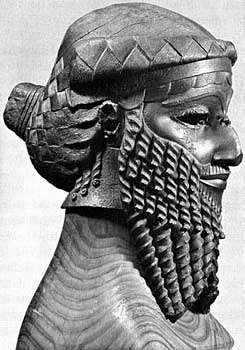
PEPI II NEFERKARE
Ascending the throne of Horus at the age of 6, Pepi II had the longest reign of any soverign in history: 94 years. He was happy when an ivory and ebony trader south of Nubia caught a pygmy, who Pepi requested be brought back to his court. The oldest 'travelogue' is the account of this traveler's adventures while on the hunt for these precious items. During the later years of this incredible amount of time, he ceded power to the vizier and nobles, who de-centralized the Old Kingdom. Indeed, Pepi II's death was followed by the end of pharaonic absolutism. His given name means 'Beautiful is the Ka of Re': Nefer = beautiful, ka, re.
2284-2184 Pharaoh of Egypt
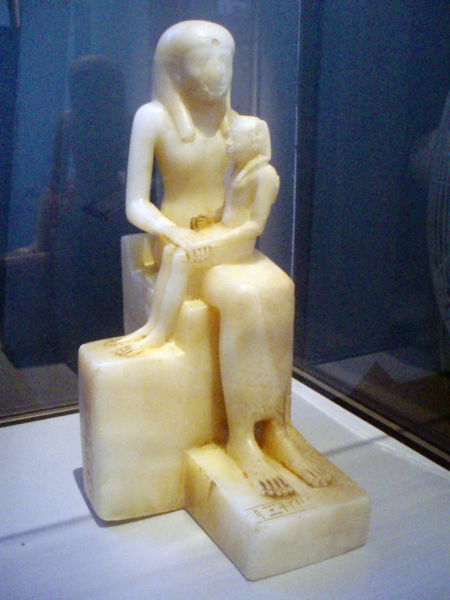
GUDEA
150 years after Sargon, Sumerian cultural ways persisted in Mesopotamia, and were even adopted by the ruling Akkadians. Cuneiform writing, ziggurat temples for city gods, and urban division of labor all continued. Akkadian language, however, became dominant, replacing Sumerian. Eventually, central control weakened and collapsed. Gudea was a Sumerian ruler of a neo-Sumerian, post-Akkadian period, of the city of Lagash, along with some other city- states. He had irrigation channels revitalized and managed a wide trade area (to Arabia, Sinai & Levant). At this time at Ur, a great ziggurat, 45 ft. high, was built, with huge stairs so the gods might come out to visit.
2160-2122
Ruler of Sumeria
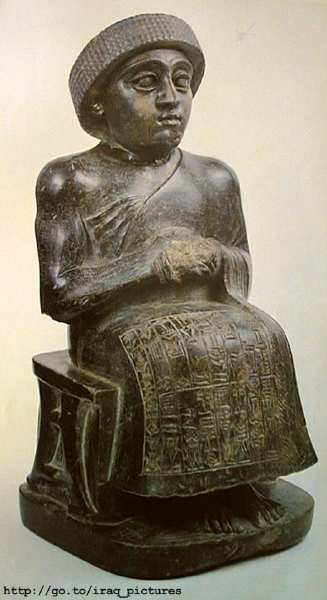
SESOSTRIS III
The centralizer and reorganizer of Middle Kingdom Egypt, Sesostris III undertook some expansive movements too. He had a canal dug through the first cataract of the Nile, built forts along the upper part of the river, and brought Nubia under Egyptian sway. He said, 'that son of mine who does not maintain my border, who does not fight for it, is no son of mine.' Unambiguious. He was worshipped as a god in Nubia, such was his reputation.
1878-1839
Pharaoh of Egypt
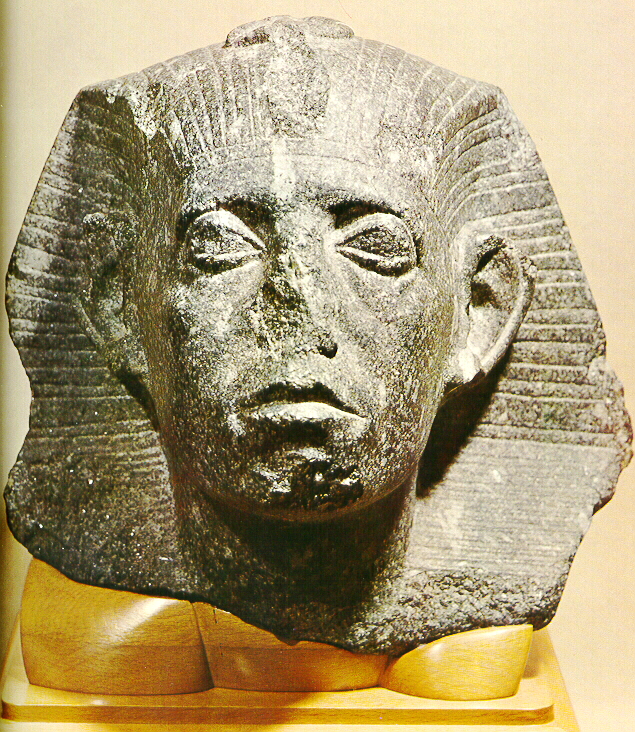
HAMMURABI
This city on the Euphrates River became great under under Hammurabi, author of Hammurabi's Code, the oldest known law code (1792). "An eye for an eye," it said on stele that were placed strategically in cities so people could see the rules. Preamble: "Hammurabi, exaulted prince, who entreats Marduk to bring about the rule of righteousness in the land, to destroy the wicked and evil-doers, who rules over the black-headed people (Sumerians had dark hair), who makes riches, who enriched Ur, who laid the foundations of Babylon, who brought plenteous water to its inhabitants..."
1830-1770
Emperor of Babylonia
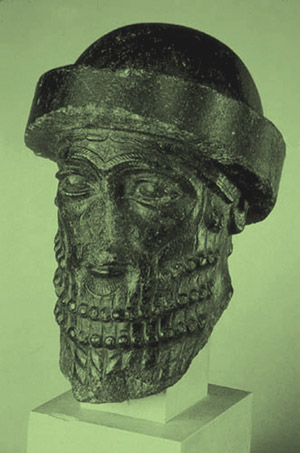
ABRAHAM
Of semi-legendary and humble origin, "Abraham went forth from Ur of the Caldees (in Mesopotamia) into the Land of Canaan". Upon arrival, by way of a special covenant, God 'gave to him all the land from the Jordan River to the sea,' later to become Israel. Abraham is the patriarch of the ancient Hebrews, whose monotheism was the seed for today's Jewish and Christian faith in the one and only God. His son Ishmael, by his maidservant Hagar, was sent into the wilderness and is revered by Muslims as the ancestor of the Arab peoples.
1750-1575*
Patriarch of the Hebrews
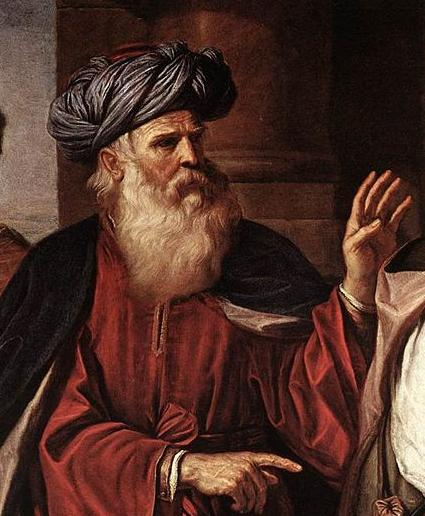
ISAAC
Son of Abraham by Sarah and Hebrew patriarch, Isaac was born when Abraham was 100 years old, and Sarah was not very far behind. His very birth was a gift. His famous role in Genesis was that of sacraficial lamb: he is to be a sacrafice to God given by his father: the killing of his only son. On the intercession of God, in the final moments, Isaac is spared, and Abraham's loyalty and faith in God is affirmed. Isaac lived to be over a hundred as well. He married Rebecca, who bore two sons.
1690-1560*
Hebrew Patriarch
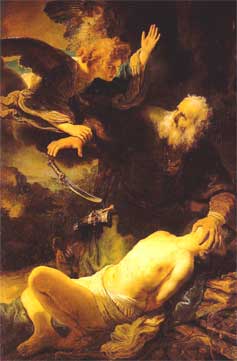
JACOB
Son of Isaac. His twin brother Esau and he were both taught the traditions of the fathers, but on the day Abraham died, when they were 15, Esau sold Jacob his birthright (the Abrahamic covenant) as eldest sibling, for a mess of pottage (lentil soup). Later when their father (now blind) died, Jacob disguised himeself as Esau and received his paternal blessing as well. He fled, and had a vision of 'Jacob's Ladder,' a stairway to heaven with angels descending and ascending. One night, he wrestled with an unknown stranger, who was later revealed as the angel of the Lord. God changed Jacob's name to Israel, 'he who is strong against God,' as God was proud of his son. Israel had twelve sons, 'the Children of Israel,' each of whom would become fathers of the 12 historic Hebrew tribes.
1670-1560*
Hebrew Patriarch
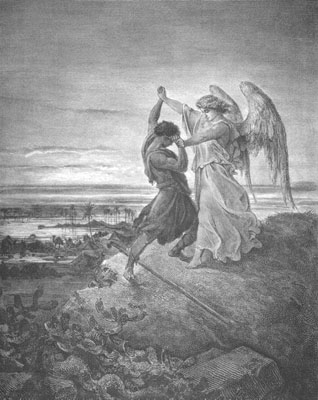
HATTUSILIS
Not the first ruler of the Indo-European Hittites in Anatolia, but the first to extend Hittite power throughout the penninsula and south to Syria. He then built the fortress citadel at Hattusa, which became the center of Hittite power. A cuneiform tablet found in 1957 discusses his deeds.
1670-1620
Emperor of the Hittites
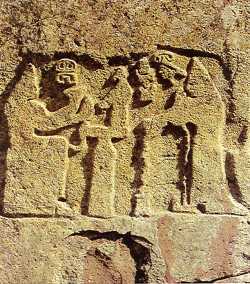
JOSEPH
Joseph had many brothers, and his brothers, jealous of his many-colored coat (among other things), sold him into slavery in Egypt land. This was during the Hyksos period following the collapse of the Middle Kingdom, and the pharaoh became enamored with Joseph's ability to interpret dreams.
1600-1520*
Hebrew Patriarch
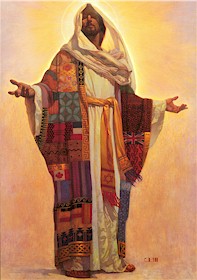
AHMOSE I
The Hyksos ruled Egypt for over a century, and finally a native rebellion led by Ahmose's grandfather, began the expulsion of the foreign occupiers. Ahmose assumed the duty to finish the job, and began rule from Thebes. He followed the Hykos out, beginning the New Kingdom Egyptian Empire, expanding to Nubia and across the Sinai in Canaan. He destroyed Hyksos settlements permanently. His huge building programs apexed in his own pyramid, the last of any pharaoh (remaining tombs would be under or on the ground). Monumental architecture was reinvigorated, the oldest glass in the world dates from his time.
1508-1458
Egyptian Pharaohess
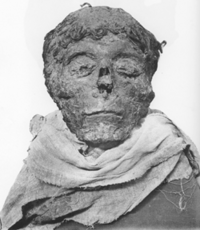
HATSHEPSUT
No, she was not Egypt's only female pharaoh, but she deserves her exhalted place due to her very successful rule. Not only did she reestablish broken trade routes to Asia disrupted by the Hyksos, but oversaw great building projects at Karnak and the great mortuary complex at the entrance to the Valley of the Kings. The tallest obelisk from Ancient times is hers. Traders visited the land of Punt where they brought back frankincense trees and myrrh. Her mummy was discovered in 2007 and DNA samples confirmed it: 18th Dynasty.
1508-1458
Egyptian Pharaohess
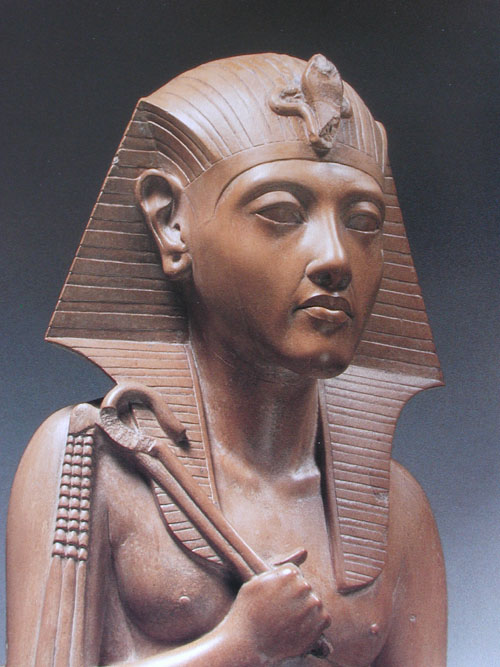
THUTMOSE III
Hatshepsut's son and head of her army, upon his mother's death he became the great conquerer of Egyptian history, "the Napoleon of Egypt," expanding the NKE to its greatest extent: Cannan, Syria, Nubia and the western desert, capturing 350 cities- even Meggido by a surprise move through a small mountain pass near Mt. Carmel, against the Canaanites. He bore down on them one at a time until they submitted. Back home, more was built at Karnak, gifts were received by Thutmose from the Assyrians, Babylonians and Hittites. Egypt pop. 3 million.
1490-1425
Pharaoh of Egypt
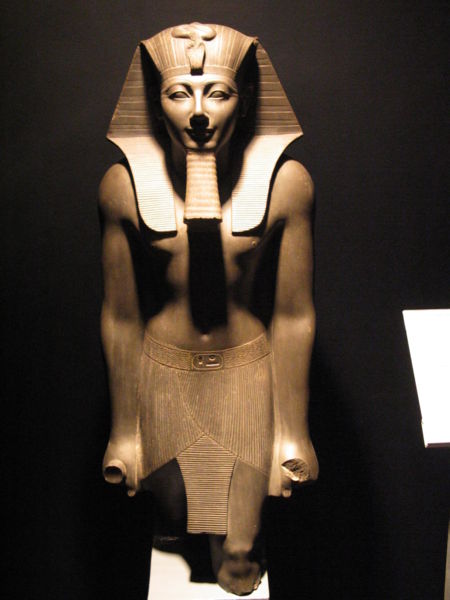
AMENHOTEP III
New Kingdom pharaohs valued splendor and pomp. Amenhotep III celebrated festivals with a procession of boats on the Nile, and dressed in special holiday garb. Members of the court were encouraged to get to know as many common people as possible, to build community. Transparency was valued, and feasts were attended by everyone, with beef, foul, bread and beer all served. Thebes was made into the greatest city of the time.
1430-1379
Pharaoh of Egypt
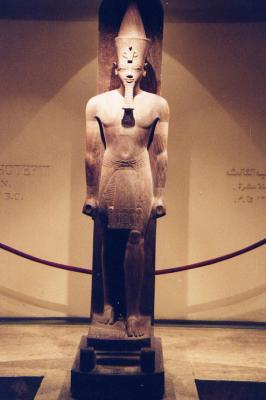
AMENHOTEP IV AKENATON
Ruler
1410-1360
Pharaoh of Egypt
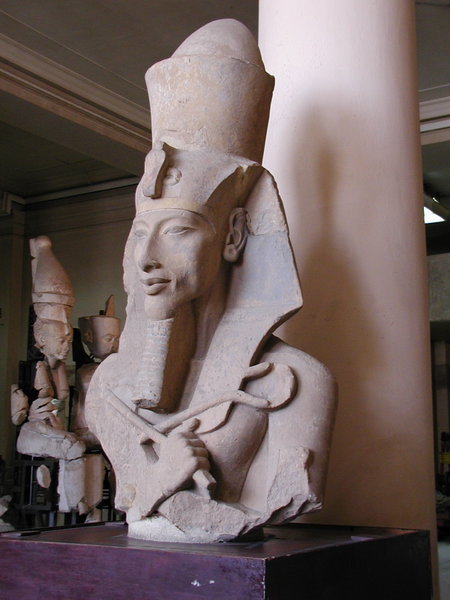
TUTANKHAMAN
Born Tutankhaton, Akhenaton the Sun worshipper was his father. But King Tut did the popular thing and changed religion back to polytheism, and reestablished Thebes as the capital and Memphis as the administrative capital. He changed his name to Tutankhaman (as in Amon-Re). A CT scan taken in 2005 showed that his leg had been broken, and he could have possibly died from an infection due to his broken leg. Discovered intact, the tomb of King Tut was the only one unmolested by grave robbers, so it was in death that Tut had his greatest effect, opening modern eyes to the splendor of Ancient Egypt. His jars, furniture, art, wine, pottery, jewelry, and tools- no to mention sarcophocus were all found.
1372-1352
Pharaoh of Egypt
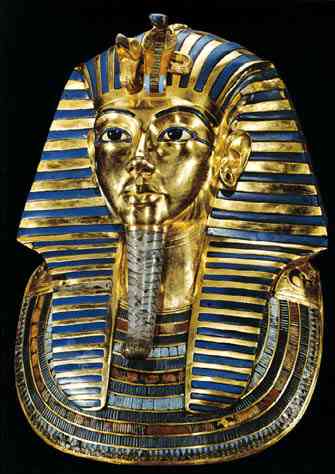
PERSEUS
1370-1320
Greek Hero
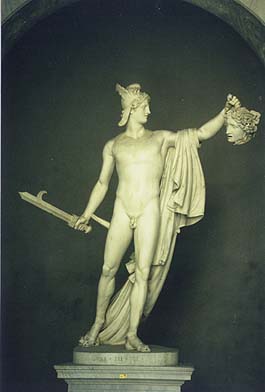
SETI
Ruler
1350-1295
Pharaoh of Egypt
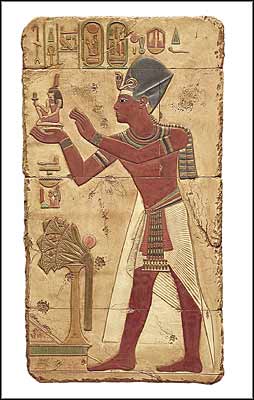
MINOS
1340-1290
King of the Minoans
